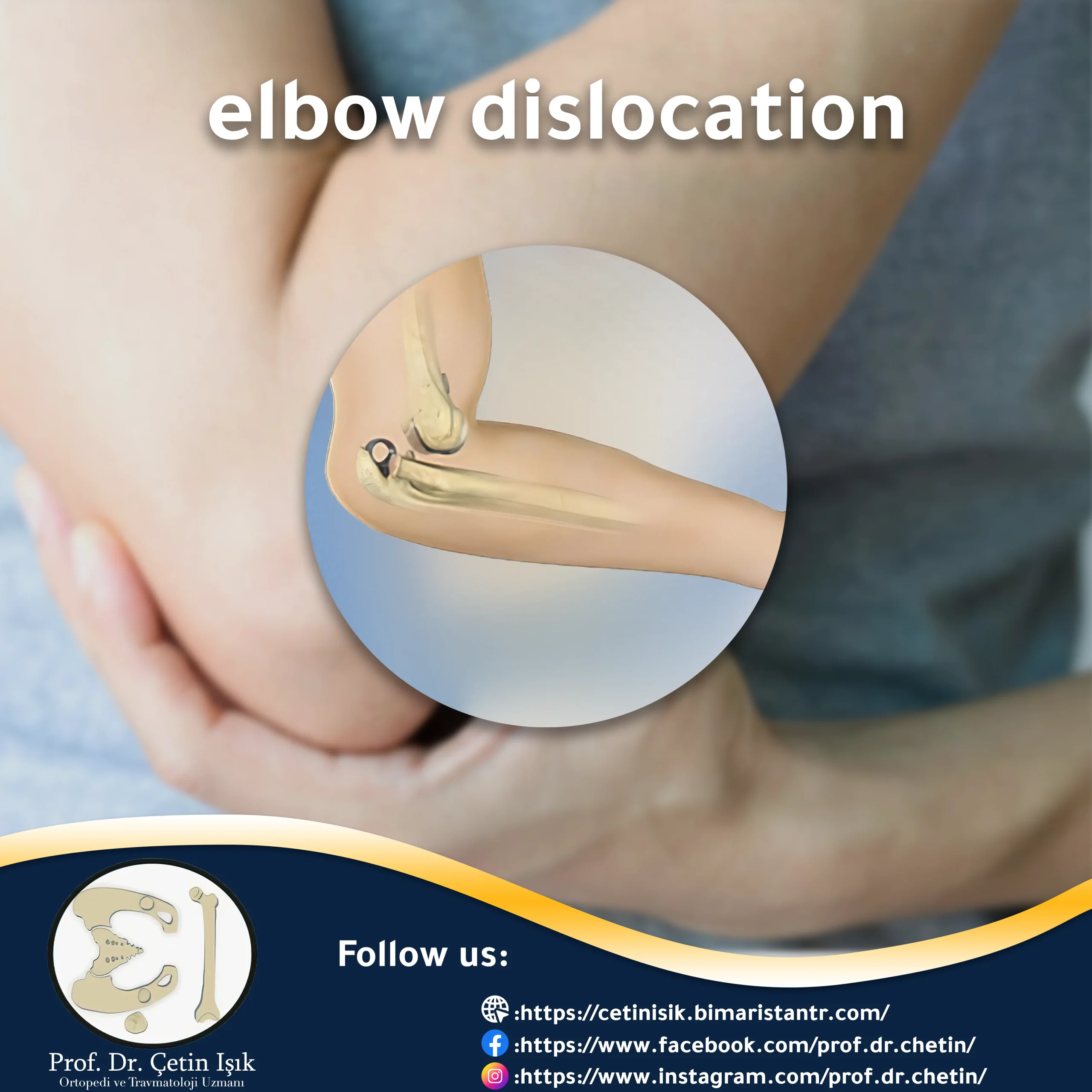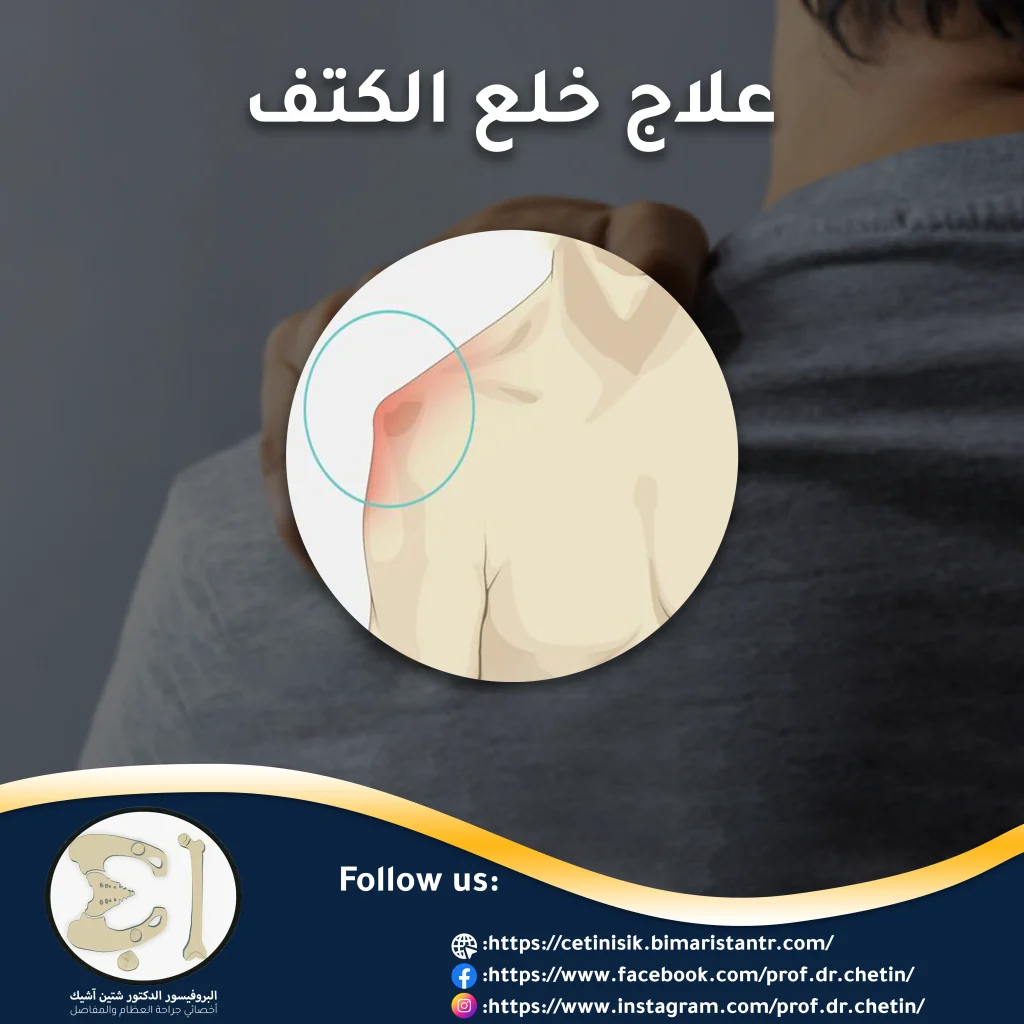Elbow dislocation occurs when any of the bones that meet in the elbow area come out of their normal place, and it is the most common dislocation that affects children, and the second most common dislocation that affects adults.
In the event that you suspect that your elbow joint has dislocated after suffering an injury to the elbow region, you should not hesitate to think about receiving support and prompt medical attention to avoid complications related to this dislocation.
But how does elbow dislocation occur? What are the bones that make up the elbow joint? What are the methods of diagnosis and treatment? We will talk about everything you need to know about elbow joint dislocation in this article. Continue to know more.
Introduction to elbow dislocation
The elbow joint is the meeting of three bones - the humerus (in the upper section) and the two forearm bones, which are the radius and the ulna (in the lower section). The dislocation of the elbow joint occurs when the bones that make up the joint come out of their original position due to strong forces.
Elbow joint dislocation is the second most dislocated joint after the shoulder joint in adults, and it is more common in males than females.
This joint has a wide ability to move, and it is one of the most stable joints, it needs great strength in order for the dislocation to occur in it, and the elbow dislocation can be complete or partial.
In a third of elbow dislocation cases, fractures accompanying the dislocation occur, and the fracture is concentrated on one of the three bones that form the elbow joint. This condition is called complex elbow joint dislocation. As for cases in which no fracture occurs, it is called simple elbow joint dislocation.
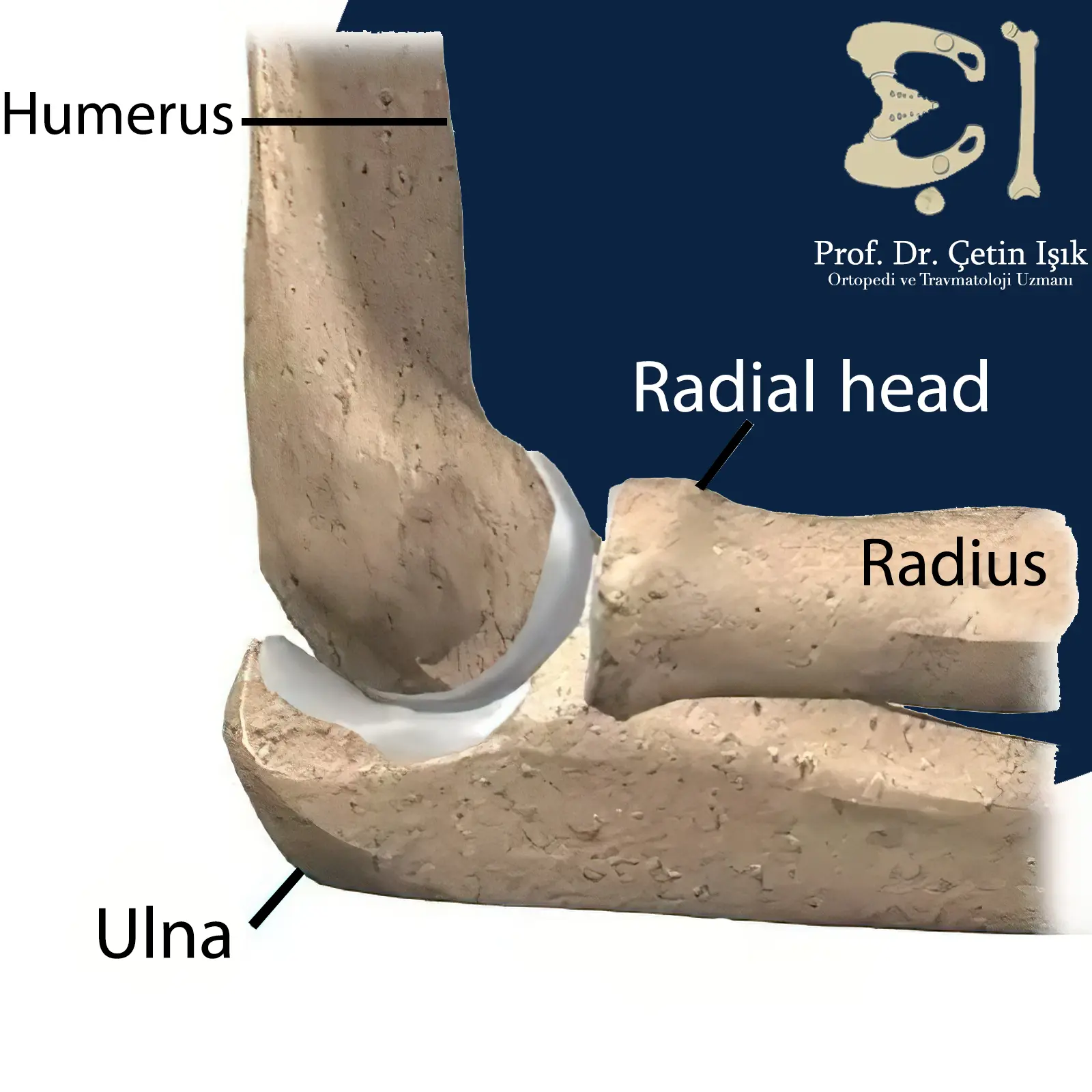
Types of elbow dislocation
Dislocation of the elbow joint has several classifications, including:
Depending on the side, the forearm bones are placed in relation to the humerus
- Posterior elbow dislocation
- Anterior elbow dislocation (rare)
- Posterior-lateral elbow dislocation: The bones of the forearm move backwards and toward the tip of the thumb
- Lateral elbow dislocation: movement of the bones of the forearm in the direction of the thumb
- Medial elbow dislocation: The bones of the forearm move opposite to the side of the thumb
80% of Elbow dislocation is posterolateral
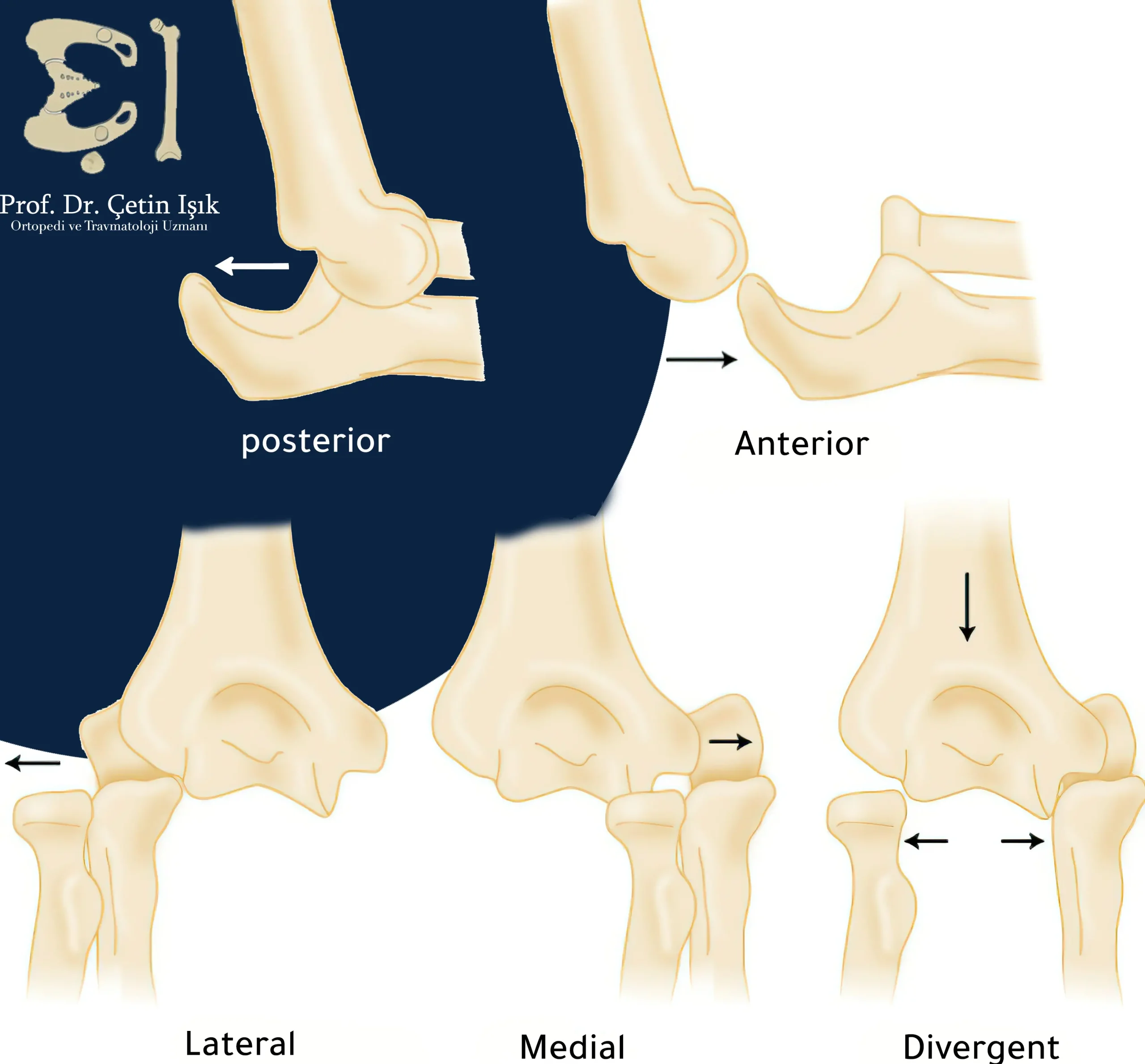
According to the degree of dislocation
- complete dislocation
- subluxation
According to the association of dislocation with fracture
- Simple dislocation: not associated with fractures
- Complex dislocation: associated with one or more fractures
Causes of elbow dislocation
We mention the most common forms of injury that lead to dislocation of the elbow joint:
- Falling on an outstretched arm
- Traffic accidents and car accidents
- Sports injuries
- People who have weakened joint ligaments have a higher risk of elbow dislocation.
- Elbow dislocation in children usually occurs as a result of a strong pull on the child's arm.
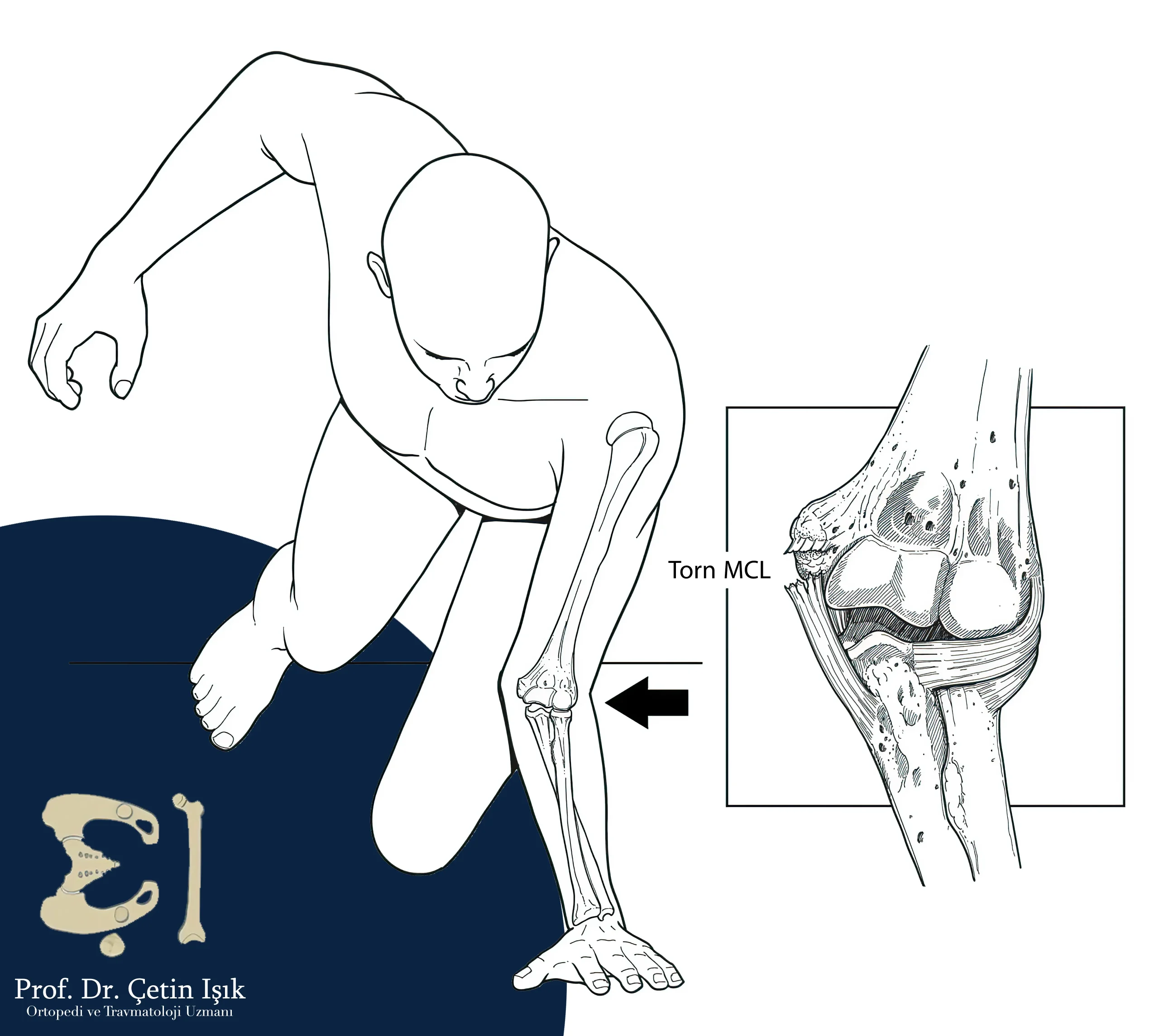
Elbow joint dislocation symptoms
The appearance and severity of joint dislocation symptoms depend on the degree and classification of the dislocation. There are a number of symptoms and signs that appear when a person has a dislocated elbow joint, including:
- Severe pain when moving the elbow or arm
- Deformation of the elbow joint due to dislocation of the bones forming the joint
- Inability to move the joint
- A sense of numbness and tingling in the case of nerve damage in the elbow area
- Inflammation and swelling in addition to bruising at the joint site, especially in the event of a rupture of the ligaments in the elbow joint
In the case of partial dislocation of the elbow joint, the movement of the joint is normal, so it is difficult for doctors to diagnose it.
Accurately diagnose elbow dislocation
These steps can diagnose an elbow dislocation. These procedures include:
Clinical examination
A procedure is carried out by the doctor, where he sees the position of the elbow joint and the deformation that occurs in it, in addition to swelling and bruising, and the doctor examines the range of movement of the joint.
The doctor also measures the pulse rate in the hand, in case of suspicion of vascular damage resulting from the dislocation, and also performs a neurological examination of the hand and arm area to ensure that there is no neurological damage accompanying the dislocation, and the presence of a nerve injury means that the injured person is unable to move the hand or arm.
radiography
- X-ray: the primary imaging for the diagnosis of dislocation of the elbow joint, It can be requested in both the anterior and lateral positions, The simple radiographic image of the elbow is able to determine the type and destination of the dislocation, and it detects associated fractures such as Forearm fractures andHumerus fracture.
- CT: It is required when there is insufficient evidence and detail regarding complex dislocations associated with fractures.
- MRI: This type of imaging is requested if the attending physicians want to know the situation of the tendons and ligaments, but it is rarely requested due to its high cost.
Other examinations
Shadow angiography is useful if the doctor suspects vascular damage.
Elbow joint dislocation treatment
The treatment of elbow dislocation mainly aims to restore the position of the elbow joint to its previous state. As for long-term treatment, it aims to restore normal movement of the hand and arm. Treatment is divided into:
Conservative treatment
There is no surgery, the types of conservative treatments include:
Medical therapy
Painkillers are given immediately after the patient's arrival at the emergency department, in order to reduce pain Elbow joint pain.
Reflex dislocation of the elbow joint
The response is conducted by a specialized doctor, after confirming the position of the joint and the type of dislocation destination, the doctor performs manual maneuvers to reset the bones in their correct position and succeed in straightening the elbow joint.
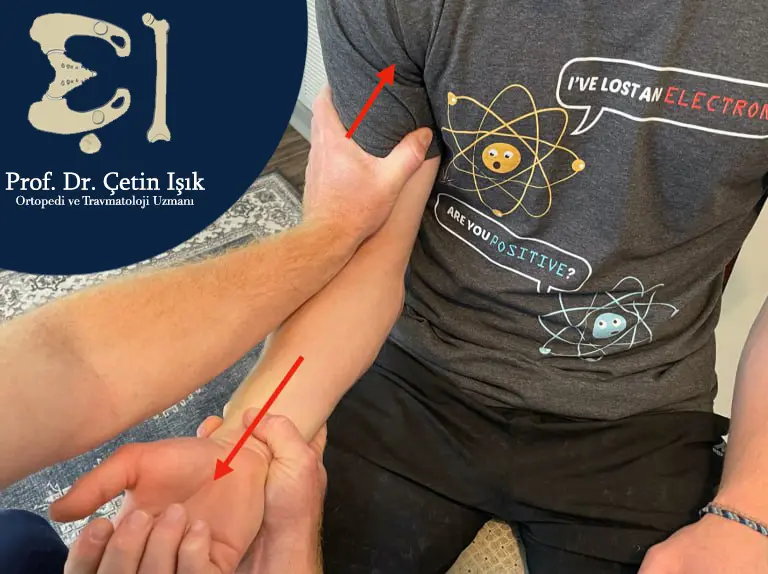
cast
It is used in the case of simple dislocation and after the appropriate dislocation is restored. The aim of its placement is to prevent movement of the dislocated elbow joint. It is placed for a period of one to three weeks. Physical therapy is followed after its removal.
Surgical treatment
Laparoscopic or open surgery is indicated in the following cases:
- In the event of a neurological or vascular injury.
- If conservative treatment fails, and the doctor is unable to treat the dislocated elbow joint.
- In the case of complex dislocation associated with fractures.
- in case torn ligaments and tendons of the muscles in the elbow area.
In an elbow joint reconstructive surgery, scar tissue and overgrown bone are removed, allowing normal movement of the elbow to be restored.
Surgical treatment methods vary according to the complications that occur due to the dislocation, for example in the case of a fracture of one of the bones forming the elbow joint, surgery is performed according to the type and severity of the broken bone.
In the event of an injury and severe damage to the elbow joint, then the doctor may decide to perform an elbow joint replacement operation and place an artificial joint.
The treatment of elbow dislocation in children is usually with conservative treatment, by restoring the dislocation of the joint by the doctor, and the child’s pain usually improves within minutes after the response, then A splint is used to ensure that the elbow does not move.
Seriousness and complications of elbow joint dislocation
A number of unwanted complications may occur, including:
- compartment syndrome
- Brachial artery injury
- Median nerve injury
- Ulnar nerve injury
- Fractures of the humerus and forearm bones associated with dislocation
- Roughness and stiffness of the joint
In conclusion, dislocation of the elbow joint is considered an emergency injury and requires immediate attention, and it constitutes a challenge for doctors, to set the correct diagnosis for it and deal with it ideally and avoid the complications that it causes. .
Sources:
Common questions
The instability of the elbow joint, severe pain in it, and the inability to move it, in addition to noticing a formal defect in it, all of these things suggest that the elbow joint will dislocate.
In cases of simple dislocations, it can be treated by resting, not moving the joint, and adjusting daily activities. As for complex dislocations that are associated with fractures or complications of dislocation, emergency surgery is required for the patient.
A simple dislocation is treated with a splint for a period of one to 3 weeks, and the condition is followed up by physical therapy that helps in restoring muscle strength. As for a complex dislocation, surgery is performed to repair it, and then a splint is placed for a period of 4 to 6 weeks, then it is the turn of the physiotherapists.
How to restore a dislocated elbow joint depends on the direction of the dislocation, which can be detected by a simple x-ray of the joint. After that, doctors perform manual maneuvers such as pulling, tightening and rotating, in order to return the bone and the elbow joint to its normal position. It is always preferable to restore the dislocation by a specialist doctor.


